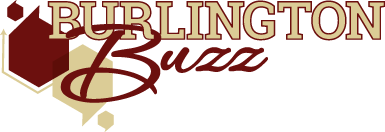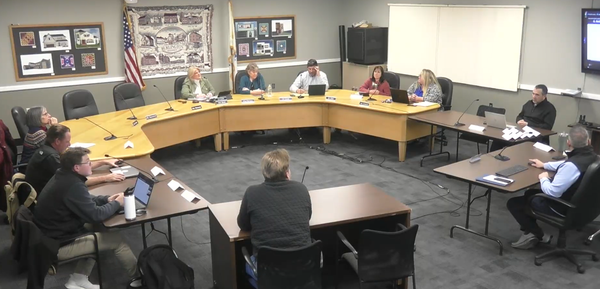Municipal Matters: All the Burlington updates you need to know

How Town Meeting Works for Burlington Residents
Massachusetts is made up of 351 cities and towns. But what’s the difference? Cities typically have a larger population and are run by a city council and a mayor or city manager. Towns are governed by a select board (the executive branch) and town meeting (the legislative branch).

This story was featured in our Fall Magazine
Read our magazine today for your guide to thriving this season in Burlington.
Town meetings have been around since colonial times and, while they might be unfamiliar to Americans outside New England, they’re the default method of government in the Commonwealth. Most town meetings are open, meaning any registered voter can show up and vote. Burlington, however, is one of 32 towns that runs a representative town meeting.
Each April, voters elect neighbors to represent their precinct as Town Meeting Members at the legislative session, which occurs in January, May, and September. These elected representatives vote on financial items and changes to the town’s bylaws.
Here are some items on the list for this September’s Town Meeting, which begins September 29 and will continue on subsequent Wednesdays and Mondays until all items have been decided.
General Bylaws
- Requiring a presentation on the 10-year capital plan to Town Meeting
- Introducing a fee for lift assists from the fire department in assisted living facilities in the absence of an emergency
- Allowing the town to enter into a payment agreement to redeem ownership of parcels that have been reclaimed by the town due to tax nonpayment
Zoning Bylaws
- To increase density and height allowed in a portion of the MBTA Communities multifamily housing zoning overlay
Financial
To allow the town to borrow $340 million for the addition renovation project at Burlington High School
Rethinking the Way We Do Things: Government Review Committee
In May 2026, the Select Board appointed a Government Review Committee to examine Burlington’s municipal structure and unify the sundry special acts and bylaws that make up the town’s government into a single charter document.
The Committee has met several times along with consultants from the Collins Center of UMASS Boston, an agency that supports municipalities in this kind of work.
They began by forming a baseline understanding of Burlington’s current government and municipal structure and will be examining each aspect of it – codifying what works and suggesting changes where indicated.
This work began in August with a look at the legislative branch and will continue for 12-18 months until a charter and associated bylaw amendments are completed and proposed to the Select Board.
Town Meeting and, if approved, the Massachusetts state legislature, will need to vote to approve the charter, and the bylaws will go to the Attorney General for approval.
Fate of High School Building to be Decided by Town Meeting
The Burlington High School Building Committee has settled on a plan for a new high school building, and they’ll be seeking support from Town Meeting this September.
The Committee, made of members from the School Committee, Town Administration, the Ways & Means Committee, and other intown stakeholders, has been working with a project manager and design firm for two years to workshop several different options, including a renovation, a complete rebuild, and an addition-renovation.
Using a $1.5-million allocation from Town Meeting, the team performed a feasibility study that looked at several different on- and off-site locations and diverse building and facilities configurations.
Ultimately, the Committee adopted an addition-renovation model in which an entirely new classroom wing will be built, the center part of the existing building will be demolished, and the remaining
spaces – including the auditorium, gymnasiums, and central office areas will undergo light renovations.
But the future of the building is still uncertain, as two checkpoints must be crossed before much more progress can be made.
First, Town Meeting must authorize the borrowing that will fund this project – a number that will be around $340 million.
The budget must be considered in light of other major building projects including the police station, Fox Hill Elementary School, and the Shawsheen Valley Regional Technical High School, which is in very early stages of the state reimbursement program.
A two-thirds vote among Town Meeting members is required to authorize this borrowing.
If it passes Town Meeting, the voters will make the final determination via a special election in November by voting on whether or not to approve a debt exclusion.
A debt exclusion would allow the town to raise more taxes than would typically be allowed until the debt from the project is paid off.
Other building updates:
Burlington Police Station:
- Budget: $46,000,000
- Renovation of temporary location: Nearly complete
- Move to temporary location: Early Fall
- Out to bid: Early Fall
- Construction begins: Late Fall
Fox Hill Elementary School:
- Budget: $100,000,000 (before state reimbursement)
- Design: Nearing completion
- Out to bid: This fall
- Construction begins: Early 2026
- Construction complete: 2028
Shawsheen Technical High School
- Budget: Too early to know
- Invited to participate in state reimbursement program
- Building Committee to be formed: By September 30
- Feasibility study request to towns: Likely after January 1
Town Refocuses Economic Development Efforts
Burlington’s Economic Development Department, which is celebrating its fifth anniversary, is refocusing its priorities in town, said Director Melisa Tintocalis.
The department’s previous strategy centered on increasing connectivity between spaces in Burlington, growing the Town Center and supporting small businesses, aiding in development of the Burlington Mall area, and attracting businesses in the life sciences industry.
The town has made progress on many of these goals, as evidenced by the passage of the Mall Road area and Town Center rezoning initiatives by Town Meeting this January and the opening of life sciences giants Vericel and The Broad Institute on Blue Sky Drive.
But economic realities such as increasing interest rates and a decreased appetite for in-person work, which the town can’t control, mean Burlington must double down on promoting itself as a strong, connected place for businesses to make their home.
Tintocalis and her team address these needs via the Bring Me to Burlington website, which is built to highlight Burlington’s key features for businesses seeking a place to locate; they also aim to support beautification and development initiatives that give Burlington more of what today’s businesses and professionals are looking for: connected spaces where people can live, work, shop, and dine without ever having to get into a car.
The town, in collaboration with design firm VHB and with the help of a $1 million grant, will soon start work on a plan for improvements to Middlesex Turnpike. The project is currently refining its scope, with a focus on both practical short-term solutions and a long-term vision for the area, including:
- Increased connectivity
- Enhanced safety for pedestrians, cyclists, and drivers
- A beautified streetscape
The team will also be working to develop a mobility action plan to address traffic and make alternative modes of transportation more feasible as development increases.
Why business development? Because the business community is a major reason for Burlington’s low residential tax rate for the services the town provides. A healthy business sector means a balanced tax base that supports quality public services without overburdening residents.
Infrastructure Bites
Beautification
Plans are underway to install an electronic Sign on the Town Common this fall. The sign will be erected at the corner of Cambridge and Bedford streets and will replace the two wooden poles that hold up vinyl signs to advertise town events.
Safety
A traffic light will be installed this fall at the intersection of Winn Street and Mountain Road; an evaluation funded through Town Meeting deemed the light necessary for safety reasons, and Town Meeting allocated $400,000 for it in May 2024.
Water
Phase 2B of the town’s connection to the Massachusetts Water Resource Authority (MWRA) pipeline will begin this winter, extending the water main from Adams Street down Middlesex Turnpike to Mall Road. The originally planned extension to Great Meadow Road would create a "triangle of water flow" without restricted points, but increased costs mean the project may need to be postponed.
Routine Maintenance
The DPW will perform annual sidewalk paving, fire hydrant inventory & replacement, and brush cutting to improve sight lines at intersections.
Route 3A Repaving Unveiled to Mixed Reviews
The work on Route 3A (Cambridge St.) from Cook St. in Billerica to Burlington High School is now largely complete, and there are predictably varying opinions on the addition of bike lanes and the delineation of a single lane of travel in areas north of Skilton Ln. and south of Bedford St.
The bike lane is separated from the lane of travel by a chevron buffer, and crosswalks that cross streets intersecting with 3A are painted green to alert cyclists and drivers of a potential intersection point.
This area has traditionally caused a fair bit of white-knuckle driving – Is it one lane? Is it two? Please let me get through without getting sideswiped! – but, while the new format is designed to follow state “complete streets” regulations, the true impacts of the change won’t be clear until school starts.
By then, traffic patterns will have settled with the full volume of car traffic, revealing whether congestion concerns (a sticking point for residents since the plan was publicized in 2023) will be borne out.
State Representative, Ken Gordon, said he’s heard from many constituents about this stretch of road since he took office. He rode his bike along the newly-paved stretch and said he will bring feedback to the state’s Department of Transportation, though the input he’s heard about the changes has been split.




